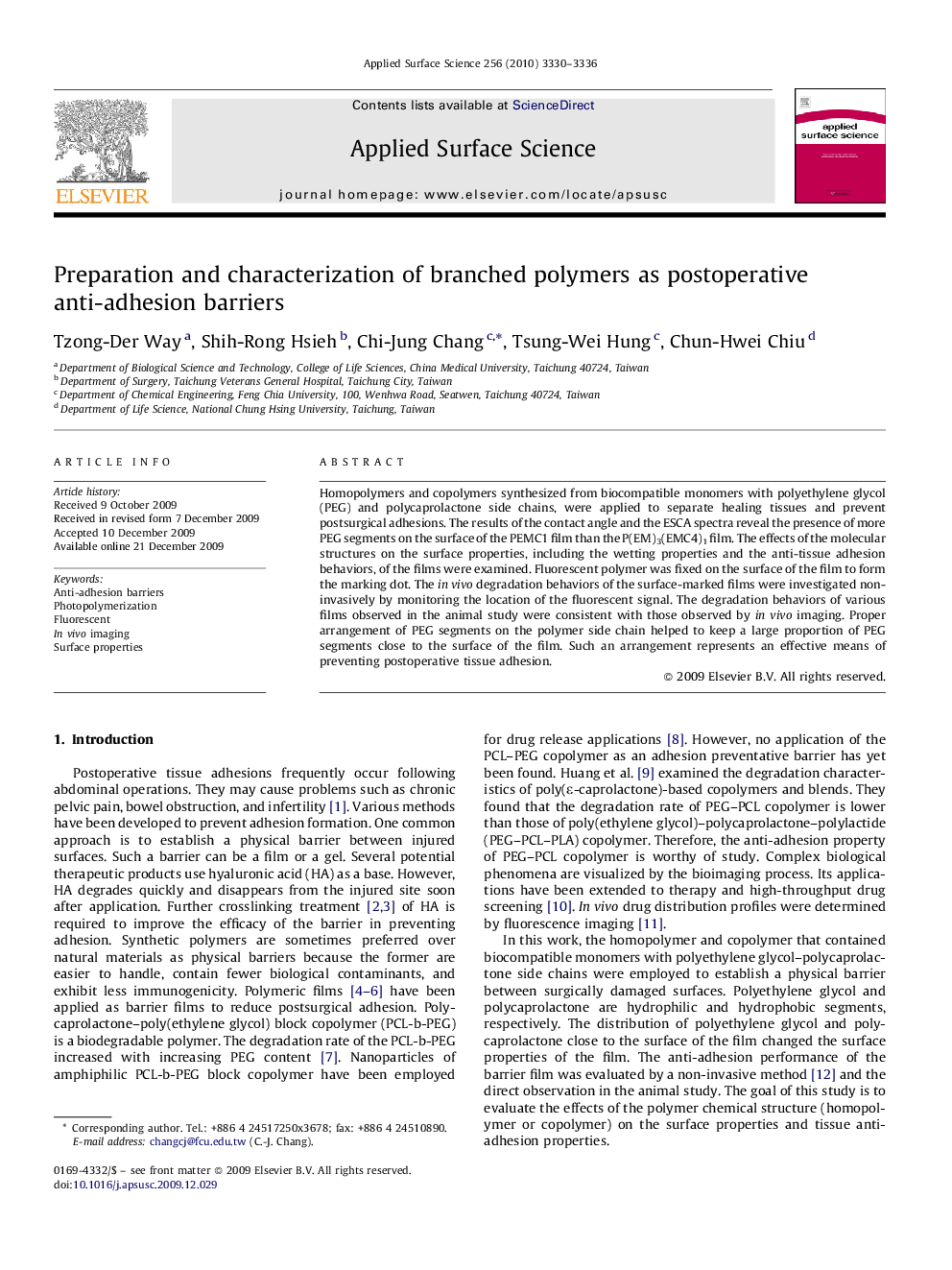| Article ID | Journal | Published Year | Pages | File Type |
|---|---|---|---|---|
| 5368789 | Applied Surface Science | 2010 | 7 Pages |
Abstract
Homopolymers and copolymers synthesized from biocompatible monomers with polyethylene glycol (PEG) and polycaprolactone side chains, were applied to separate healing tissues and prevent postsurgical adhesions. The results of the contact angle and the ESCA spectra reveal the presence of more PEG segments on the surface of the PEMC1 film than the P(EM)3(EMC4)1 film. The effects of the molecular structures on the surface properties, including the wetting properties and the anti-tissue adhesion behaviors, of the films were examined. Fluorescent polymer was fixed on the surface of the film to form the marking dot. The in vivo degradation behaviors of the surface-marked films were investigated non-invasively by monitoring the location of the fluorescent signal. The degradation behaviors of various films observed in the animal study were consistent with those observed by in vivo imaging. Proper arrangement of PEG segments on the polymer side chain helped to keep a large proportion of PEG segments close to the surface of the film. Such an arrangement represents an effective means of preventing postoperative tissue adhesion.
Related Topics
Physical Sciences and Engineering
Chemistry
Physical and Theoretical Chemistry
Authors
Tzong-Der Way, Shih-Rong Hsieh, Chi-Jung Chang, Tsung-Wei Hung, Chun-Hwei Chiu,
